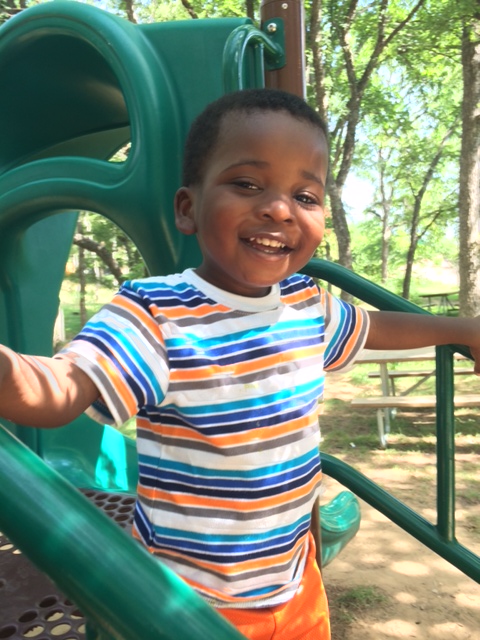 Internationally adopted children have had their share of negative influences in their young lives, whether from separation and loss, abuse or neglect, loneliness and lack of affection, homelessness or institutional care, racism or rejection, or poverty and malnutrition. Whatever trauma they experienced, these powerful events have no doubt affected their well-being, self-esteem, views on life, and ability to manage their own behaviors and thoughts. Some children, we may find, cope better than others; they are resilient. What is resilience? Resilience is the ability to overcome serious hardship, adverse childhood experiences, and debilitating personal trauma.
Internationally adopted children have had their share of negative influences in their young lives, whether from separation and loss, abuse or neglect, loneliness and lack of affection, homelessness or institutional care, racism or rejection, or poverty and malnutrition. Whatever trauma they experienced, these powerful events have no doubt affected their well-being, self-esteem, views on life, and ability to manage their own behaviors and thoughts. Some children, we may find, cope better than others; they are resilient. What is resilience? Resilience is the ability to overcome serious hardship, adverse childhood experiences, and debilitating personal trauma.
Psychologists, neurobiologists, physicians, and social workers have been studying resilience since the 1970’s, trying to determine how children develop the capacity for resilience in the face of such serious adversity. What is this magical ingredient that allows some children to propel forward in life while others seem stuck in the moment? Is it due to one’s gender or age? Is there a guardian angel watching over them? Could it be that some children are just luckier than others?
While some research has discovered that resilience does somewhat depend upon individual differences in temperament, genetic factors, the ability to cope with stress, the extent of their adverse childhood experiences, and their current problems, it has also been found that it’s possible to strengthen these capabilities at any age. It is never too late to build resiliency in your child! The plasticity of our brains presents windows of opportunity for intervention. The frontal brain areas are the ones that control executive function, or our cognition, impulse control and attention. In children, this is the most active brain area. While chronic stress can debilitate a child’s coping mechanisms, which are located in this frontal region of the brain, other focused activities can actually build their executive function and self-regulatory skills. By integrating biology (resistance to adversity) and environment (skill building activities and strong relationships), we can ensure positive outcomes for children who have experienced prolonged periods of chronic stress and trauma.
So how can we do this?
- Making Connections
The single most common factor found in children who have developed resilience is having at least one stable and consistent relationship with a supportive adult, parent or caregiver. Your child must have a supportive and safe adult-child relationship and this relationship must be of high quality and quantity. Additionally, your child will need to develop friendships, a strong extended family network, and a supportive community in order to feel that they belong. You may have to help them learn to do this properly. It will take time and attention.
- Help Your Child Learn How to Help Others
Teach your child to be altruistic and contribute to society. Help them engage in age-appropriate volunteer tasks, which give them an individual sense of purpose and meaning. They will feel empowered by helping others, and by doing a task they can actually master. As they experience the warmth and compassion of giving to others, they will better internalize how to respond when they receive this same compassion from others.
- Teach Your Child How to Self-Regulate
Be sure your child has opportunities to strengthen their adaptive shills, and become mindful in doing so. Help them become aware of “triggers,” or events which can make them spiral into dysregulation. Explore actions, therapies, and assists which can allow your child to manage his own outbursts or negative thoughts. This will create structural and functional pathways in your child’s brain that will in turn help them respond more appropriately to trauma.
- Teach Your Child to Practice Self-Care
With you as their model, teach your child to eat properly, exercise regularly, rest sufficiently, reduce over-scheduling, and enjoy life with abundance. Have some fun! When self-care becomes routine, you have a healthier child and home.
- Maintain a Daily Routine
Adopted children thrive on consistency and structure; whether they acknowledge this or not, it is actually very comforting to them. Knowing what is going to happen, and when, allows them to experience a sense of calmness and security.
- Help Your Child Develop Self-Efficacy
To help your child feel confident and increase their self-worth, teach them that they have the power to control their own life and make some decisions. This leads to “self-efficacy,” or the belief that one has the ability to meet goals and accomplish things.
- Celebrate Culture and Language with Your Child
If you want a resilient child, arm them with the tools of their unique cultural traditions, their native language, and faith in a higher power, whether that is an organized religion or not. Connection with their past and the future is important. They must have this strong sense of identity in order to be confident in who they are. If your child can feel rooted in who they are, they can develop competence in their responses to whatever life throws at them.
- Maintain a Positive Outlook on Life
If you show your child that you are hopeful and see the good things in life, so will your child. This helps him to strengthen his own desire to “keep going” and move toward the future. He can see the light in achieving reasonable goals. Be sure to praise him in his accomplishments along the way, no matter how small.
- Provide Opportunities for Self-Discovery
Guiding your child to identify what he or she has learned from an experience helps them to strengthen their skills and understanding. It teaches them that what may have initially seemed scary or insurmountable is in fact “doable”. This builds their confidence and self-esteem in their own abilities to overcome adversity and chart their own course in life.
- Provide Assurances
Children want to know that things will be OK. Assure your child that change is just a part of life. Tell them that you know they might be scared of change, but you will be there by their side. Let them know that this relationship is going to last forever, and you will be there as they move into the future. No longer do they have to navigate their life and their future alone; you will be there to catch them if they fall!
Remember that developing resilience is a personal journey; it will be different for every child. The timeline is not the same for everyone, because their pasts are so varied and challenging. Each child will learn at their own pace and yes, they will stumble and fall in the process. That is how we learn! You must be open and available to them when this occurs; you must model healthy behavior and help them learn how to survive manageable stress. Positive stress is actually growth-promoting when handled properly! When supported by adult assistance, it will teach them how to be better able to cope over time. As their parent, you will be giving them the tools to respond to any challenge and successfully navigate the obstacles in their life. YOU will be teaching your adopted child to become resilient!

